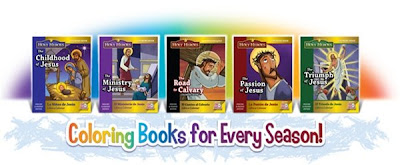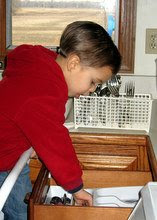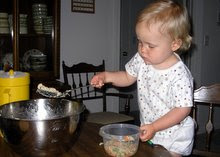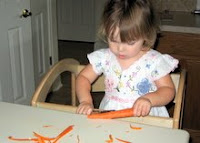 The Best Teacher is Forever
The Best Teacher is Forever
By Contributing Mama Writer: Barbara Curtis
Barbara is a seasoned homeschooling mommy of 12 (yes, twelve blessings), now a grandmother of ten, and a happily married wife. Barbara is a “revert”, she was baptized Catholic then Evangelical for many years and has come back to our beautiful Faith! Barbara and her family are a ” Family-First kind of family.”
 It’s that time of year when some of you may be wondering about preschool. There’s so much cultural hype and social pressure – with many states actually considering mandatory preschool – that even moms who love having their kids at home wonder if they’re doing the right thing.
It’s that time of year when some of you may be wondering about preschool. There’s so much cultural hype and social pressure – with many states actually considering mandatory preschool – that even moms who love having their kids at home wonder if they’re doing the right thing.
Mothers who could be encouraged to find fulfillment in a very fulfilling calling – after all, isn’t that why people go into teaching?- are instead made to feel inadequate and second-best. It’s disappointing to see a nation denigrate the role of motherhood and to see individual mothers lose confidence in themselves.
Helping to restore that confidence is what my writing is all about. I believe in the power of mothers to launch their children into a lifetime love of learning – as well as good character and strong values. By translating practices from my Montessori teacher training into a philosophy along with specific strategies and activities for the home, I hope to encourage, equip and empower moms so you never feel that you “have” to send your children to preschool for them to have the best.
Believe me, the best is you – especially when you understand a few basic principles that will revolutionize your motherhood and help you find the joy in each day with your children.
Over the next four days, I’m going to run four parts from my book Mommy, Teach Me!: Preparing Your Preschool Child for a Lifetime of Learning . Taken from an introductory chapter “Why Your Preschooler Can Thrive at Home,” these show why learning at home in the preschool years is the best choice of all:
. Taken from an introductory chapter “Why Your Preschooler Can Thrive at Home,” these show why learning at home in the preschool years is the best choice of all:
The Best Teacher is Forever
For several years, we’ve enjoyed the special gift of a family of sparrows each spring. In spite of the hustle and bustle and comings and goings of our larger-than-life family, two birds have prepared to welcome the next generation by building a nest right over a lamppost hanging from our garage.
The cycle is fascinating as the eggs are laid and hatched and then Mama and Papa Bird feed their babies until they’re strong enough to fly. The process almost seems over before it’s begun.
And that’s true throughout the animal kingdom, as relatively little time is required for babies to reach adulthood. Animals are born with drives which compel them toward the behavior appropriate to their species: how to hide from enemies, build nests, protect, feed, and care for their young, finally to teach them to run or to fly.
Compare human infants, who take almost a year to walk independently to horses that walk and run within minutes of birth. In the world of animals, the young are helpless for only the briefest period and their own development is governed by instinct. All their instinctual behaviors would be released even if they were kept in a solitary condition.
Not so with humans. We don’t have many instincts. We have potentials which can only be released if certain requirements are met within our environment. Unlike animals, human infants are completely dependent on their parents for many, many years.
Could it be that God had a plan in mind?
I believe so. Throughout centuries and over a wide range of cultures, parents have been their children’s primary teachers in the early years and sometimes longer. Which leads me to believe that since every child has the potential to learn, every parent has the potential to teach.
If this sounds like a radical idea today, it’s only because we’ve established a very compartmentalized model of education which includes the idea that only professionals truly know how to teach.
On the contrary, I believe that any parent with a desire to teach can learn to do it and do it well. So while the not-so-new “news” that the first six years hold the greatest learning potential may cause some parents to send their kids to preschool, there is another, far better alternative – and that is to learn how to be a good teacher yourself.
Just as we moms learned how to care for and feed our babies, we can learn how to care for and feed the developmental needs of our young children. Once you know these “secrets” you will be confident that you are the best teacher your child will ever have.
Because you are, you know. You are the one God created to be fully tuned into your children, to understand their strengths and weaknesses, to love them unconditionally and to be there forever.
No preschool teacher can lay claim to that. A preschool teacher will have numerous other kids to concern herself with. Her time with your child is limited to a certain number of hours per day – how deeply can she understand each individual then? And when the preschool years are over, your child will have to say goodbye and move on. All that part of your child’s life invested in relationship with another temporary stand-in for you.
Many readers of my blog have asked me about preschool. The bottom line for me – as a former teacher who enjoyed the adoration of numerous preschoolers year after year – is this: Why send your child off to fall in love with his teacher when he can learn at home and continue focusing his love and building his trust in you?
The longer the time you share and the greater your investment in these years, the stronger the bond will be when your children are grown. Take it from a 36-year veteran mother who’s launched half her children into adulthood: In a world where teens are facing such great challenges , this bond can make a world of difference in your child’s future.
Notes on the pictures: As I was writing Mommy, Teach Me! and Mommy, Teach Me to Read! I asked readers who’d used my ideas to submit pictures for the books. The picture below is from Aggie, who’d read my very first book Small Beginnings when it was published in 1997 and had incorporated many of my ideas into her three daughters’ preschool years. Here she is, showing her daughter an exercise I described in both Small Beginnings and Mommy, Teach Me! which encourages order, eye-hand coordination, pincer grasp, and concentration.
And here is her daughter, showing the results of her mom’s efforts:

For more information, see my website Mommy, Teach Me! or click on Categories, then Montessori, Preschoolers or Homeschool above. Come back tomorrow for Part Two.
I’ve been following Barbara’s blog for the past couple of weeks and she has brought some perspective to my homeschooling journey. It has been a breath of fresh air for me in moments when I felt so overwhelmed with decisions for my children. To quote her, “that’s what readers can look for from me – something simple, something real, and something with hope in it.” For more neat ideas by this Blogging Mama, please visit her Homeschooling journey: Mommy Life.

Thank you for following Raising (& Teaching) Little Saints! Visit us again soon!

“THE ALTAR GANG!® audio series takes a fresh look at the Mass. Each Sunday, AJ the Aspergillum and Skiff the Incense Boat, along with rest of the Gang, help the priest prepare for Mass and learn about the Readings and Gospel through stories and silly adventures. The rest of the Gang includes Pete the Chalice, Mary the Ciborium, Pablo the Paschal Candle, Maggie the Bells, Thomas the Thurible, Big John the Baptismal Font, Mo the Ambo, James and John the Altar Candles, Cecilia the Music Stand, Guido the Organ and Mimi the Altar Cloth. Fun, exciting, educational, THE ALTAR GANG!® will bring the Mass alive for your family and teach them about the Liturgy and the Catholic Faith.”




























